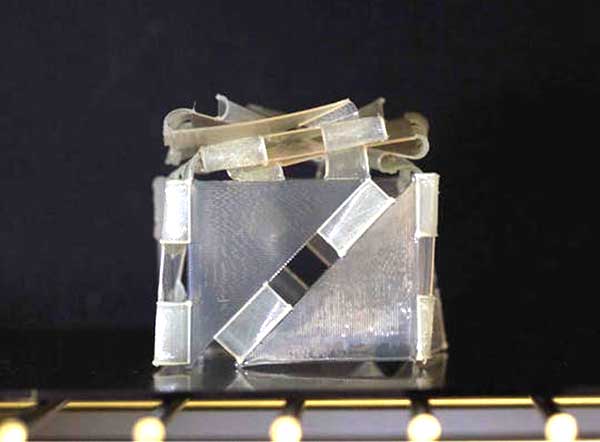
The world of robotics is a rapidly growing and expanding. It’s becoming more and more important to the way that we do business and how we work as a species, too. For many of us, though, keeping up to date with the changes and innovations within the industry can be tough work. However, one of the most interesting innovations in recent times appears to have come from Caltech 3D and Harvard. Together, they appear to have printed a series of self-folding robots.
This interesting new origami-inspired robot design is going to become very important in the near future. Capable of dealing with very particular configurations and settings, they could be adjusted for a whole variety of purposes on-demand. Known as the “Rollbot”, these devices will be used to achieve a great many changes. They’ll be able to assemble into a pentagonal prism shape, and will be capable of a self-rolling mechanism in response to its own stimuli.
That’s very impressive, and shows a fine example of how this kind of technology could be used in the future. They could become very important in the development of untethered robots that could be useful in both medicine and engineering. How so?
The co-first author of the paper, Connor McMahan, said: “Many existing soft robots require a tether to external power and control systems or are limited by the amount of force they can exert. These active hinges are useful because they allow soft robots to operate in environments where tethers are impractical and to lift objects many times heavier than the hinges.”
The creation of something truly special
Robotics is always impressive when it comes to life, especially when they can achieve something not previously possible. this new form of robot will be able to move naturally, akin to a living creature, but can adjust to fit the environmental needs and challenges that it faces. However, they will need them to be rigged with hard components to ensure that it can be controlled externally.
This design used includes liquid crystal elastomers to make sure that they can easily be adjusted and moved, even in extreme conditions such as high levels of heat. When this goes above its stated temperature, it will change shape to correspond and match-up with the change that has happened. This allows for vast changes in shape that would simply not be possible with other forms of material.
It’s these unique changes that are going to have a massive impact on the way that robotics are used in the future. By varying their architecture to fit with the environment they are acting within, these will be used to help create a solution to problems previously unsolvable.
While it’s unlikely that we’ll see such a device moving around the world around us anytime soon, they are very much in development. It’s an exciting time for science and for robotics – who knows what the future will hold when such devices come to be on a regular basis?
Citations
Sorry, the comment form is closed at this time.